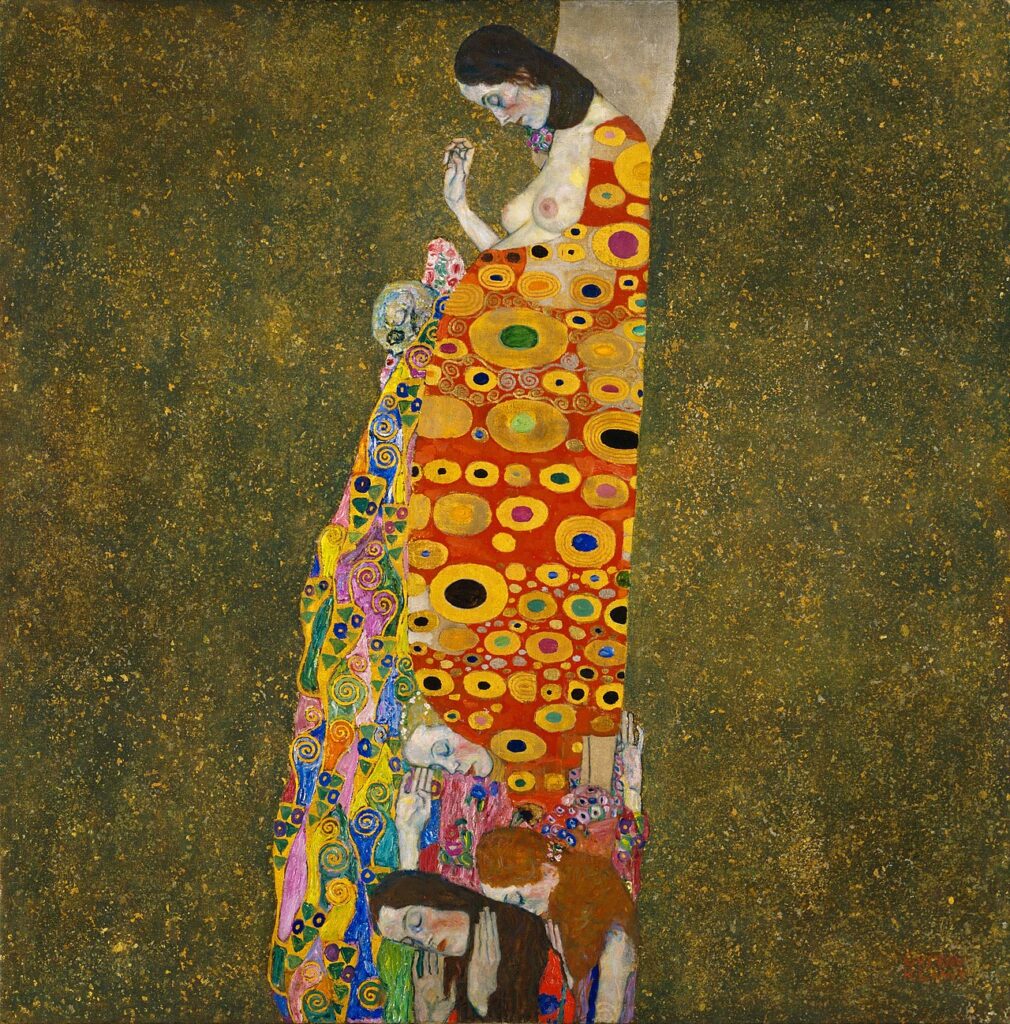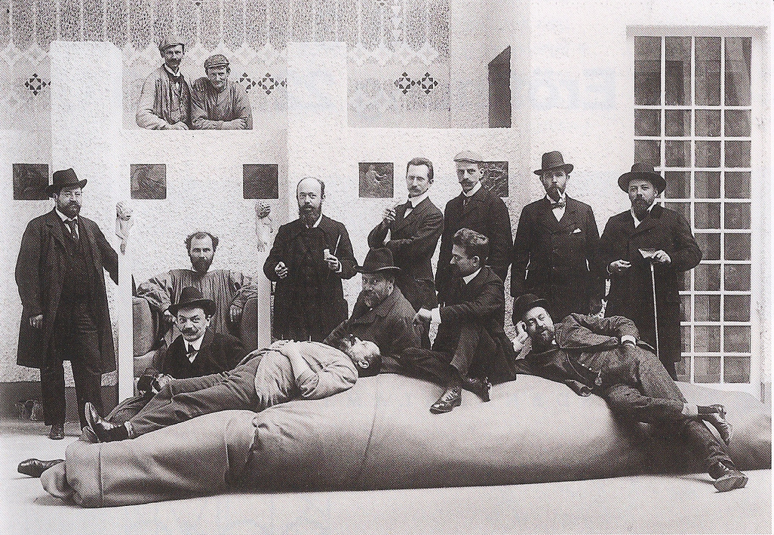10 Art Nouveau Jewelry Pieces to Die For
A dragonfly woman, a golden serpent of opals and rubies, and a woman waiting for an octopus are three short descriptions of authentic Art Nouveau...
Jimena Escoto 8 December 2025
Who is Gustav Klimt? His name is associated with gold, women, and eroticism, but is that really all there is from his art? Being the child of the era of changes, he abandoned the academic style and turned to modern art instead. Here are some interesting facts about Gustav Klimt that shaped his iconic image.
Gustav Klimt’s father was a gold engraver and taught him this craft from an early age. At the age of 14, Klimt entered the School of Arts and Crafts (Kunstgewerbeschule) in Vienna, specializing in architectural painting, where his elder brother studied. After that, the brothers and their friend, Franz Matsch, began working on decorating Austrian villas and theaters together. In 1890, they were commissioned to make murals for the Kunsthistorisches Museum in Vienna. Gustav Klimt created personifications of Greek, Egyptian, and Italian art through the images of beautiful women in the academic manner. Klimt’s paintings stand out especially for their elaborate ornaments (in Old Italian Art painting in particular). Paying close attention to ornaments later became one of the special features both of Klimt’s art and emerging Art Nouveau movement.
A series of events and tragedies, such as the deaths of Klimt’s father and brother, as well as the scandal and rejection of his Faculty Paintings for the University of Vienna, greatly affected the artist. They were perhaps the reasons why Klimt stepped away from traditional academic art and the art establishment of the late 19th century to pursue a different way of expression.

Gustav Klimt, The Quattrocento in Rome and in Venice. Ecclesia, 1890-1891, Kunsthistorisches Museum, Vienna, Austria. Photograph by Culturawiki via Wikimedia Commons (CC BY-SA 4.0).

Gustav Klimt, Hope II, 1908, Museum of Modern Art, New York, USA.
Gustav Klimt devoted his art to the timeless themes– Life, Love and Death. As he lived in Vienna at the turn of centuries, he was influenced by the changes in worldview of these times. For example, the father of psychoanalysis, Sigmund Freud, developed ideas of Eros (life and love) and Thanatos (death) that were the two main drives shaping human personality. Those ideas found reflection in Klimt’s paintings. Life was depicted through The Three Ages of Woman, Hope I, Hope II, and Death and Life. However, the symbols of Death, skulls, were added almost in each painting, so Life and Death existed hand in hand. Thus, the artist drew attention to the fragility of life, its cyclicality, and the inevitability of death.
We admire Klimt’s masterpieces indeed, but we still hear Klimt’s whisper–memento mori; in other words, death is inevitable. Another theme noticable in his art is Love. The most famous masterpiece depicting it is The Kiss. This painting is filled with symbols, but is interesting for another reason. Klimt used vertical forms for the man and round for the woman. By doing so, he united two principles—the masculine and feminine.

Gustav Klimt, The Kiss, 1907-1908, Österreichische Galerie Belvedere, Vienna, Austria.

Members of the Vienna Secession, 1902, Vienna, Austria. Photograph by Moriz Nähr. Wikimedia Commons (public domain).
In 1897, Gustav Klimt and Austrian painters and architects (such as Josef Hoffman, Koloman Moser, and Otto Wagner) established a new art movement called the Vienna Secession as the opposition to the academic art. Klimt was also elected as the president of the new movement. Being inspired by Klimt, Secession members did not want to work according to academic models and were looking for new ways of expression. Its motto was revolutionary for classical Viennese society—To Every Age Its Art, To Every Art Its Freedom.
The members of the Secession wanted to break the foundations of art and create new pictorial and architectural languages. One of the main aims of the Vienna Secession was the organization of exhibitions of modern art. For this purpose, in 1898, architect Joseph Maria Olbrich built the Secession Building, an exhibition space of the new organization. The building was very thoughtfully constructed. The glass roof provided natural light, and the paintings were exhibited in a modern way.

Gustav Klimt, Pallas Athena, 1898, Vienna Museum, Vienna, Austria.
Pallas Athena created by Klimt in 1898 became the symbol of the Vienna Secession. This work is notable not only for that. Klimt depicted Athena not only as a beautiful, but also powerful and formidable woman. Later he developed the image of femme fatale, or fatal woman, which would be a recurring theme in his art. Moreover, notice the use of gold in this work. It is considered that his “golden period” started around 1898.

Gustav Klimt, Portrait of Adele Bloch-Bauer I, 1903-1907, Neue Galerie, New York, USA.
This is how the masterpieces of Gustav Klimt’s “golden period” can be described. Klimt turned to the use of gold in his artworks for several reasons. Firstly, he was familiar with the technology of gilding from early childhood. Secondly, Klimt’s art was influenced by what he saw in Italy. Visiting St. Mark’s Cathedral in Venice and the Church of San Vitale in Ravenna, Klimt was amazed by the Byzantine mosaics. In religious images, gold was associated with divinity, but Klimt found a new interpretation. In his mature works, gold was associated with sexuality and the attractiveness of women. In addition, following the rules of modern art, he emphasized decorativeness in paintings through patterns. Thus, patterns cover a significant part of the canvases; the hands and faces of the portrayed seem to grow out of a mottled carpet-patterned space.
Some of the associations everyone has with Klimt are images of women and eroticism. Taking into consideration his numerous women portraits, we can also say that through art he studied the mystery of feminine sexuality. Klimt always admired his models and captured the beauty of their bodies and shapes through smooth lines. Keeping in mind revolutionary psychoanalysis ideas, we can see how Klimt removed the veil from feminine sensuality. On the contrary to academic art, he reflected passionate and fatal women, both nude and dressed.
However, not only the painting process connected the artist with his models. Gustav Klimt was in fact quite a womanizer and had intimate relationships with some of his sitters. Moreover, he had almost 14 children from different women.

Egon Schiele, Klimt in a Light Blue Smock, 1913, Wikipedia.
Klimt’s individual manner of painting became a vivid example for younger artists—the future representatives of expressionism, such as Egon Schiele. In 1907, Schiele met Gustav Klimt, who became his mentor and influenced Schiele’s art. Klimt discovered symptoms of Schiele’s genius, bought his drawings and helped him to exhibit the works of the young artist. Both Klimt and Schiele were interested in human sexuality and eroticism. However, the atmosphere of their paintings differs a lot. Where Klimt saw calmness and decorative beauty, Schiele drew attention to sharpness and unsightliness.
DailyArt Magazine needs your support. Every contribution, however big or small, is very valuable for our future. Thanks to it, we will be able to sustain and grow the Magazine. Thank you for your help!